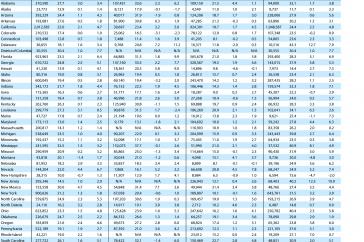UNH Space Scientists Available to Discuss Imminent Fall of NASA Satellite

Child Poverty By Place Size in 2010. Click to enlarge.
DURHAM, N.H. -- NASA's bus-sized Upper Atmosphere Research Satellite (UARS) is set to re-enter Earth's atmosphere sometime this afternoon with some 26 pieces of debris predicted to survive the fiery fall. The satellite will not be passing over North America during that time period but the exact time and location of re-entry remains uncertain. NASA officials stress that the risk to public safety or property is extremely small.
According to University of New Hampshire space physicist Marc Lessard of the Institute for Study of Earth, Oceans, and Space (EOS) and department of physics, there is nothing unusual about UARS other than the fact it's orbiting altitude is relatively low - about 185 miles above Earth.
"Satellites at these altitudes experience friction or "drag" from the upper atmosphere, which slows the spacecraft and results in a decreased altitude and more drag," Lessard said. "Even satellites near a 250-mile altitude will experience drag and have to be boosted to higher altitudes or they, too, will come down."
Predicting when satellites at these altitudes will re-enter is extremely difficult because they have orbital periods of about 80 or 90 minutes and are moving extremely fast. Current models of the upper atmosphere (used to make the prediction of re-entry time) cannot account for all of the variability that scientists know is there and that is related to solar activity.
Notes Lessard, "Thus, it becomes nearly impossible to say with any accuracy what the re-entry time will be. Of course, being off by 20 minutes, which would be amazingly accurate, has everything to do with predicting where it might land."
James Ryan, also of EOS and the department of physics, says the outcome of a re-entry is much more predictable if a spacecraft can be maneuvered by its own power to splash down in safe locations, as was done with the 17-ton Compton Gamma Ray Observatory (GRO) 11 years ago. EOS was the American center for development of the Compton Telescope on GRO.
UARS, which monitored ozone and other chemicals in the upper atmosphere, was put into orbit by astronauts on the shuttle Discovery in 1991, and decommissioned in 2005. Pieces tens to a few hundreds of pounds are predicted to survive re-entry of the 6.5-ton satellite.
Since the beginning of the Space Age in the late-1950s, there have been no confirmed reports of an injury resulting from re-entering space objects. Nor is there a record of significant property damage resulting from a satellite re-entry.
-30-
Editors and reporters: James Ryan can be reached at (603) 862-3510 or mailto:james.ryan@unh.edu"
Latest News
-
November 6, 2025
-
November 5, 2025
-
October 24, 2025
-
October 8, 2025
-
October 2, 2025
















































